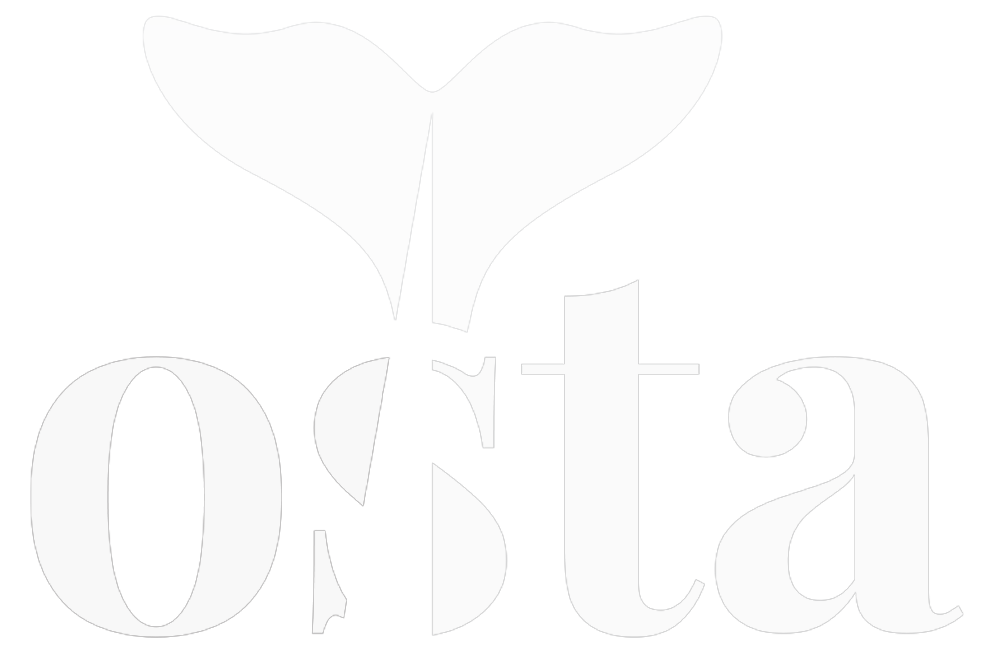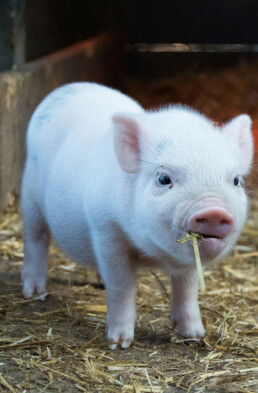Dierlijke uitdagingen overwinnen
Biggencastratie: doorbreken van de status quo
In Vlaanderen blijft de praktijk van onverdoofde biggencastratie een aanhoudend welzijnsprobleem. Terwijl dierenartsen nauw betrokken zijn bij vergelijkbare ingrepen bij honden en katten, ontbreekt hun professionele begeleiding bij de castratie van biggen. Dit contrast in aanpak roept vragen op over de ethische behandeling van landbouwdieren.
De gevolgen zijn ernstig: mannelijke biggen ondergaan deze procedure zonder adequate pijnbestrijding, wat leidt tot onnodig lijden. Er bestaan alternatieven, zoals vaccinatie tegen berengeur of het houden van intacte beren, maar deze oplossingen worden nog niet breed toegepast. Door deze inactiviteit blijft het lijden van ongeveer 3,85 miljoen mannelijke biggen in Vlaanderen alleen al jaarlijks voortduren.
De realiteit van biggencastratie
1. Documentatie door Wakker Dier
Wakker Dier, een Nederlandse dierenwelzijnsorganisatie, heeft biggencastratie in beeld gebracht. In een korte video van 56 seconden wordt het volledige proces getoond, uitgevoerd door twee varkenshouders. De procedure bestaat uit vijf stappen:
- De big positioneren (ondersteboven aan twee poten vastgehouden)
- Een snede in het scrotum maken
- De zaadstrengen doorsnijden
- De testikels verwijderen
- Een antiseptische oplossing aanbrengen
Deze documentatie biedt een duidelijk beeld van de procedure, exclusief het hanteren van de biggen.[1]
2. Documentatie door GAIA
In 2022 filmde GAIA een Vlaamse varkenshouder tijdens het castreren van biggen. De beelden onthullen een zorgwekkend gebrek aan expertise. De varkenshouder worstelt zichtbaar met de procedure, waarbij hij herhaaldelijk in de big snijdt zonder de (onderhuidse) testikel te lokaliseren, wat onnodige pijn veroorzaakt bij het dier. Naarmate de frustratie van de houder toeneemt, escaleert de situatie, resulterend in agressief gedrag dat het leed van de big verder verergert.
Deze confronterende beelden illustreren de voortdurende aanwezigheid van onethische praktijken in de Vlaamse varkenshouderij.[2]
Onverdoofde castratie: Een zorgwekkende realiteit in de Vlaamse varkenshouderij
In Vlaanderen ondergaan mannelijke biggen routinematig castratie zonder adequate verdoving. Deze ingreep, uitgevoerd terwijl de big bij bewustzijn is, omvat het verwijderen van de testikels en het doorsnijden van de zaadstrengen. De big ervaart intense pijn tijdens drie cruciale momenten: bij de incisie in het scrotum, het naar buiten trekken van de testikels, en het doorsnijden van de zaadstrengen.
Hoewel 85% van de gecastreerde Vlaamse biggen meloxicam krijgt (een pijnstiller vergelijkbaar met Ibuprofen), biedt dit geen verdoving tijdens de procedure zelf. Slechts 0 tot 3% van de biggen ontvangt procaïne, een verdovingsmiddel dat in de testikels wordt geïnjecteerd. Echter, zelfs dit is ontoereikend om de acute pijn volledig te verlichten.
De toediening van verdoving is bovendien uitdagend in de intensieve varkenshouderij, waarbij vaak de vereiste wachttijden niet worden gerespecteerd. Ondanks het gebruik van pijnstillers en verdovingsmiddelen blijft het ernstige lijden van mannelijke biggen tijdens castratie een hardnekkig probleem.
In Vlaanderen is de castratie van mannelijke biggen zonder adequate verdoving de norm. Deze ingreep, die plaatsvindt terwijl de big volledig bij bewustzijn is, omvat het verwijderen van de testikels en het doorsnijden van de zaadstrengen. Hierbij ervaart het dier intense pijn op drie kritieke momenten: tijdens de incisie in het scrotum, bij het uittrekken van de testikels, en bij het doorsnijden van de zaadstrengen.
Hoewel 85% van de gecastreerde Vlaamse biggen meloxicam toegediend krijgt (een pijnstiller vergelijkbaar met Ibuprofen), biedt dit middel de pijn geen verdoving tijdens de castratie zelf. Slechts een zeek klein percentage (0 tot 3%) van de biggen ontvangt procaïne, een verdovingsmiddel dat in de testikels wordt geïnjecteerd. Echter, zelfs dit middel blijkt ontoereikend om de acute pijn tijdens de castratie volledig weg te nemen. Bovendien vormt de toediening van verdoving een uitdaging in de intensieve varkenshouderij, waar de vereiste wachttijden vaak niet worden gerespecteerd.
De pijnlijke castratie van mannelijke biggen blijft zo een aanhoudend en hardnekkig probleem in de varkenshouderij. [3]
Hervorming biggencastratie: naar een veterinair model zoals bij honden en katten
Het welzijn van biggen vereist professioneel veterinair toezicht tijdens castratie. De procedure dient vergelijkbaar te zijn met het protocol voor honden en katten, inclusief sedatie, anesthesie, intubatie, pijnstilling en uitgebreide nazorg. Alleen dierenartsen kunnen een big effectief en met minimale pijn castreren. Deze hoge zorgstandaard vraagt echter om aanzienlijke investeringen in tijd, energie en financiële middelen van varkenshouders.
Gezien de ingrijpende aard van de procedure is het essentieel om zowel acute als postoperatieve pijn aan te pakken. Gedeeltelijke verdoving blijkt ontoereikend, wat suggereert dat het beëindigen van biggencastratie in de intensieve varkenshouderij de beste oplossing is. De huidige praktijken maken adequate verdoving, vergelijkbaar met honden- en kattenprotocollen, onmogelijk. Een wettelijk verbod op biggencastratie zou het lijden van mannelijke biggen wegnemen. Alternatieven zoals vaccinatie tegen berengeur (momenteel toegepast bij 15% van de Vlaamse mannelijke varkens) en het houden van intacte beren (8%) bieden effectieve strategieën om berengeur te beheersen zonder castratie toe te passen. [4]
Potentiële impact: een optimale realiteit voor biggen
3.850.000 dieren
3.850.000 mannelijke biggen
__
Jaarlijks worden in Vlaanderen ongeveer 10 miljoen varkens geslacht, waarvan de helft beren zijn. Van deze beren wordt 23% gevaccineerd tegen berengeur of intact gehouden, terwijl 77% – ongeveer 3,85 miljoen – wordt gecastreerd.
[1] Voor meer inzicht in het verloop van biggencastratie kan u de video van Wakker Dier bekijken: “De onverdoofde castratie van een big” (56 seconden, 7 maart 2011). De video is beschikbaar op: www.youtube.com/watch?v=zvUp1ugiuMU
[2] De beelden zijn eigendom van GAIA, een Belgische dierenbeschermingsorganisatie.
[3] Deze informatie is gebaseerd op het GAIA-rapport ‘Het pad naar het beëindigen van biggencastratie’ (april 2023).
[4] Ibid. Biggencastratierapport.
[5] Ibid.


